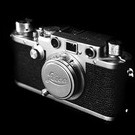Dust, fungus, or normal?
-
Recently Browsing 0 members
- No registered users viewing this page.
-
Similar Content
-
- 31 replies
- 899 views
-
- 1 reply
- 282 views
-
- 17 replies
- 3,654 views
-
- 24 replies
- 1,512 views
-
- 3 replies
- 430 views
-



Recommended Posts
Join the conversation
You can post now and register later. If you have an account, sign in now to post with your account.
Note: Your post will require moderator approval before it will be visible.